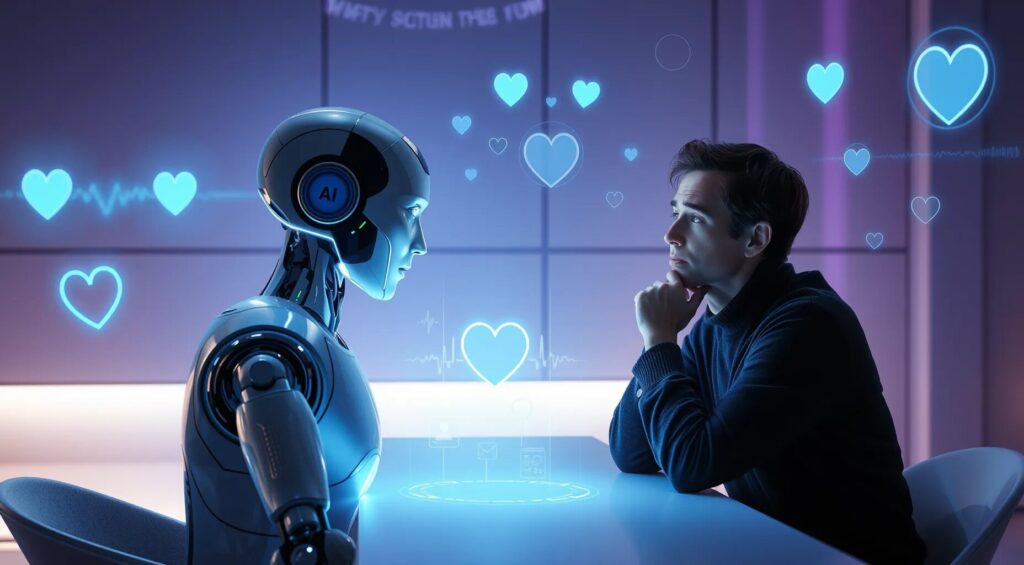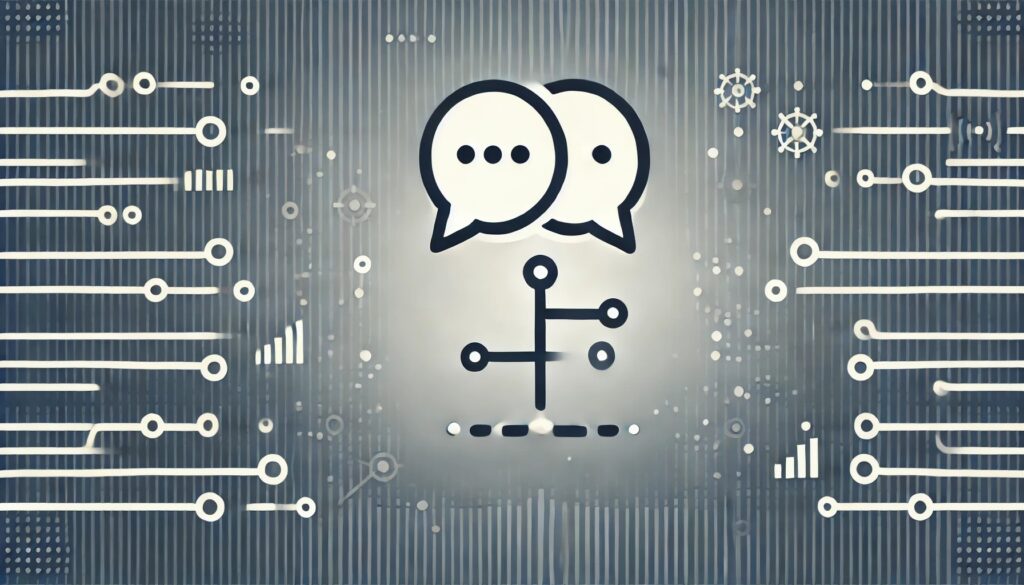
What Exactly is Emotional AI?
Emotional AI is a revolutionary field in artificial intelligence focused on understanding and responding to human emotions. But can a machine actually “feel”? That’s the big question, right? Emotional AI uses complex algorithms to detect and interpret emotional signals from humans—whether through speech, facial expressions, bridge the gap between cold, calculated responses and emotionally intelligent interactions. With emotional AI, machines are striving to become more human-like, attempting to comprehend our feelings and adjust their responses accordingly. But, here’s the real kicker—how accurate is this emotional understanding?
The Evolution of AI in Emotional Understanding
AI has come a long way from being a simple program that could perform calculations or automate tasks. Over the past few decades, technology has shifted from automation to intelligence, where machines can now predict and interpret behaviors based on data. The rise of machine learning and deep learning has supercharged emotional AI, allowing systems to “learn” about human emotional cues. Early emotional AI relied on basic voice analysis, but today, it combines various data streams—from text analysis to facial recognition—to identify the emotion behind the words.
How Does Emotional AI Work?
The mechanics behind emotional AI are fascinating. These systems rely on natural language processing (NLP) to pick up emotional undertones in speech, such as excitement or frustration. Meanwhile, machine learning algorithms continuously analyze vast amounts of emotional data to identify patterns. Emotional AI systems often include sentiment analysis, which breaks down speech or text into positive, negative, or neutral sentiments, giving machines a clue into how the person feels. Paired with biometric inputs like heart rate or even body language, these machines are becoming scarily good at reading us—but can they really feel?
The Role of Natural Language Processing (NLP)
Let’s dive deeper into NLP, because it’s at the heart of emotional AI. NLP is what allows AI to understand the intent behind human language, beyond just the words themselves. It examines tone, pacing, and context. For example, someone could say, “I’m fine,” but based on the tone or pause in their voice, the machine might sense they’re not fine at all. This is critical for emotional AI, because without understanding context and nuance, machines would be clueless about how we feel. But, is interpreting human language enough to truly get our emotions?
Facial Recognition and Emotional Cues
Another major component of emotional AI is facial recognition technology. Our faces are like emotional billboards, showing everything from happiness to frustration, whether we like it or not. Emotional AI analyzes facial expressions to determine our emotional state. Subtle changes in eyebrows, mouth movements, or even pupil dilation can send signals that an AI system picks up on. For example, a furrowed brow might indicate confusion or stress, while a genuine smile (not just one of those polite grins) signals happiness. But, is a smile always a smile? Machines still struggle with cultural differences in expressions or when emotions don’t match body language.
Can AI Really Understand Human Emotions?

This is where things get tricky. While emotional AI can detect and analyze patterns in speech, facial expressions, and body language, understanding emotions is a whole different ballgame. Humans are complex, and emotions are influenced by countless factors—personal experiences, culture, and even our surroundings. Machines don’t have the capacity for empathy or personal experiences; they rely purely on data. While AI can mimic understanding by providing the right responses at the right time, there’s still a question: does this qualify as true emotional intelligence?
It’s like teaching a robot to smile—it might get the mechanics right, but does it feel the happiness behind it?
Emotional AI in Customer Service: Friend or Foe?
If you’ve interacted with a chatbot lately, you might have noticed how some of them feel more “human” than ever before. That’s emotional AI at work. Customer service has become one of the most visible applications of this technology. AI systems now pick up on frustration in your voice or words and offer more empathetic responses. For instance, if you call in angry about a product, the AI could recognize your emotional state and adjust its tone to sound more soothing or helpful.
While this sounds amazing, some argue that it can feel like a manipulation tactic. Is emotional AI being used to calm us down without genuinely solving our issues? Is it an ally or simply a tool for corporate convenience? The line between support and exploitation is fine when emotions are involved.
AI in Therapy: Emotional Support or Robotic Reassurance?
Now, let’s explore a more sensitive application—AI in therapy. Emotional AI is slowly entering mental health spaces, where it’s used to assist in therapy sessions or provide basic emotional support to those in need. Some AI-driven apps, for example, ask users how they feel and respond with comforting words, much like a human therapist might. These programs analyze users’ emotional patterns over time and can even predict mental health trends.
While the concept of AI therapy is promising, can a machine really replace a human therapist? Some see it as a helpful bridge for those who can’t access therapy, while others feel it lacks the deep understanding and connection necessary for true emotional healing. After all, empathy is a distinctly human trait—so can an AI offering robotic reassurance ever fill that void?
Ethical Concerns: When Machines Read Our Moods

When machines start to read our emotions, it opens a Pandora’s box of ethical dilemmas. Sure, emotional AI can improve customer service and offer helpful insights, but what happens when it’s used in less savory ways? Imagine a world where companies track your emotional data to tailor marketing or even control your decisions. For example, you might get an ad when you’re feeling vulnerable or sad, designed to trigger an emotional response and push you to buy something. Emotional AI has the potential to be misused for manipulation if the right regulations aren’t in place.
Additionally, there’s the concern of privacy. Emotional data, like facial expressions and voice patterns, is deeply personal. How comfortable are we with machines analyzing our moods—and more importantly, who gets to own that data?
The Future of Emotional AI: Empathy or Exploitation?
Looking ahead, the future of emotional AI seems to hang in a balance between its potential to create more empathetic technology and its capacity for exploitation. In an ideal world, emotional AI could make technology more compassionate, helping us manage our emotions in healthy ways and fostering better relationships between humans and machines. But if left unchecked, it could also lead to a future where corporations and governments use this technology to influence behavior, invading personal spaces in ways that we haven’t fully prepared for.
It begs the question: Can AI ever truly understand empathy, or will its emotional intelligence always be a calculated performance meant to serve a purpose? Only time will tell if it becomes an empowering tool or a gateway for manipulation.
Challenges in Teaching AI Human Emotions
Teaching AI to truly grasp human emotions presents a range of challenges. First and foremost, emotions are not black-and-white; they exist in a spectrum that is often difficult even for humans to interpret. For instance, sarcasm or subtle humor can easily be misunderstood by AI, as these require cultural context and social awareness—things that machines inherently lack.
Additionally, emotional responses differ across individuals and situations. An excited shout in one context could mean joy, while in another it could signal frustration. The nuance of human emotion is deeply influenced by personal experiences, background, and mood at the moment, making it incredibly complex to code for every possibility. And then there’s the issue of bias. AI learns from data, but if the data fed into the system reflects only one cultural or emotional viewpoint, the AI’s emotional “intelligence” will be equally biased.
The question of whether a computer can think is no more interesting than the question of whether a submarine can swim.
— Edsger Dijkstra
Will Emotional AI Ever Replace Genuine Human Connection?
As emotional AI becomes more advanced, many wonder if it could ever replace real human interactions. The short answer is: probably not. While AI can simulate emotional understanding and provide responses that feel human-like, there’s a certain depth to human relationships that machines cannot replicate. The shared experiences, empathy, and intuitive understanding that come from face-to-face interaction go beyond mere data analysis.
Yes, machines may be able to recognize that you’re sad, but they can’t truly share that emotion with you. They can’t feel the warmth of human connection. In fact, leaning too heavily on AI for emotional support might even hinder our ability to connect with real people, leading to more isolation than connection.
Potential Benefits of Emotional AI in Everyday Life
Despite these challenges, there are significant benefits to integrating emotional AI into our daily lives. In healthcare, emotional AI could help doctors better understand patients’ emotional states, allowing for more personalized care. In education, teachers could use emotional AI to track students’ engagement and emotional well-being, identifying those who may need extra support.
In the home, devices like smart speakers or virtual assistants could become more intuitive by understanding our moods—offering a calming song when we’re stressed or reminding us to take breaks when we seem overwhelmed. The ability to detect emotional cues could lead to more user-friendly and supportive technology, reducing frustration and enhancing the overall user experience.
The Limits of AI in Capturing Complex Human Feelings
But as impressive as emotional AI is becoming, its ability to capture the full complexity of human emotion is still limited. Human emotions are influenced by a lifetime of experiences, and are often a mix of contradictory feelings that even we struggle to understand. Machines lack the personal history, cultural understanding, and empathy required to fully grasp this complexity.
For example, consider grief—a profoundly human experience that is tied not just to sadness but to memories, love, and loss. Emotional AI might be able to detect a sad tone in someone’s voice, but it would miss the layers of emotion that come with such deep feelings. And without true understanding, the responses provided by emotional AI may fall flat, coming across as robotic or insincere, no matter how advanced the system.
How Emotional AI is Reshaping Relationships with Technology
As emotional AI becomes more integrated into our lives, it’s reshaping how we view and interact with technology. Devices are no longer just tools—they’re becoming companions that can recognize and respond to our emotional needs. For some, this means a more personalized experience with technology that feels more intuitive and responsive. For example, emotional AI-powered apps designed for mental health support can offer real-time feedback and mood tracking, providing users with a sense of understanding and care.
However, this also raises questions about our dependence on technology. As machines become better at mimicking emotional intelligence, will we start to prefer interactions with them over the messiness of human relationships? While emotional AI can certainly improve convenience, it may also contribute to a growing sense of detachment in our interpersonal lives.
Can Emotional AI Bridge the Gap Between Machines and Human Connection?
The ultimate question remains: can emotional AI truly bridge the gap between cold, calculated machines and the deep, meaningful connections humans crave? While emotional AI can certainly enhance the way we interact with technology—making devices more intuitive, responsive, and seemingly empathetic—it’s important to remember that machines don’t feel. They don’t experience emotions the way humans do; they merely simulate responses based on patterns and data.
In some areas, such as customer service, mental health support, or even education, emotional AI can offer valuable assistance. It can help create more positive, supportive interactions with technology and reduce the frustrations we often encounter when machines don’t “get” us. However, there is still a vast difference between being understood by a machine and truly connecting with another human being.
Human connection involves more than just the exchange of words or emotional cues—it’s about shared experiences, empathy, and the subtle, often unspoken understanding that comes with being human. While emotional AI can mimic these things to a degree, it ultimately falls short in capturing the essence of what makes relationships meaningful.
In the end, emotional AI is a powerful tool that can make technology feel more human, but it can’t replace the genuine connections we form with other people. The future may see even more advanced emotional AI systems, but there will likely always be a clear line between the emotional responses of a machine and the deep, authentic emotions of a human heart.
Conclusion: The Promise and Limits of Emotional AI
Emotional AI is an exciting frontier that brings machines closer to understanding and responding to human emotions, offering enhanced interactions and more intuitive technologies. Whether in customer service, healthcare, or education, emotional AI can make our lives easier and even more emotionally attuned.
However, despite its impressive advancements, emotional AI remains a simulation of understanding, not the real thing. Machines can detect emotions, but they don’t experience them. While this technology can offer a more human-like experience, it can never fully replicate the authentic connections that come from genuine empathy and shared human experience.
As emotional AI continues to evolve, it offers immense potential to improve our daily lives, but we must remain mindful of its limitations. After all, there’s a world of difference between a machine that mimics emotions and a human who feels them. The future of emotional AI will likely involve balancing the benefits of machine intelligence with the irreplaceable depth of human connection.
Resources
Understanding Emotional AI: What It Is and How It Works – An overview of emotional AI’s function and potential from Forbes.
The Role of Natural Language Processing (NLP) in Emotional AI – IBM explains NLP and its significance in emotional AI.
Emotional AI and Customer Service: Friend or Foe? – An article discussing the use of emotional AI in customer service and its impact.
AI in Therapy: The Promise and Challenges – Psychology Today explores the use of AI in therapy and its limitations.
Ethics in Emotional AI – Brookings Institution examines the ethical concerns surrounding emotional AI.
The Future of Emotional AI – A forward-looking analysis of emotional AI applications and their future impact.



